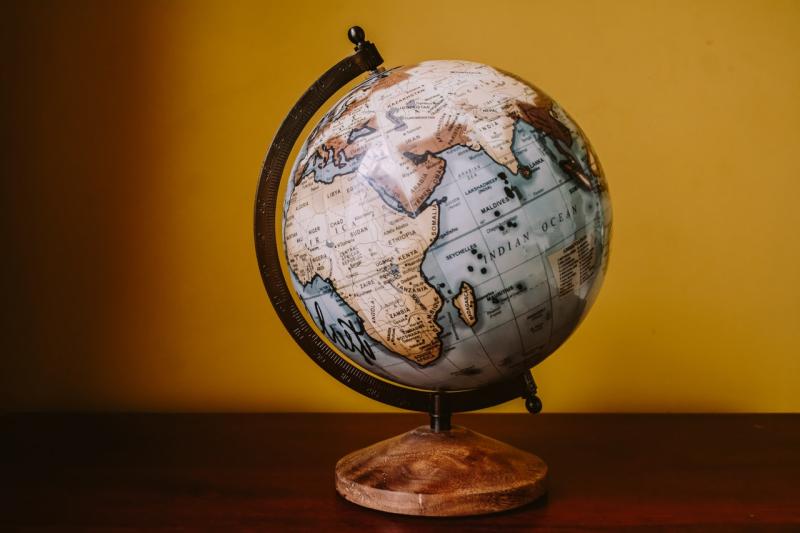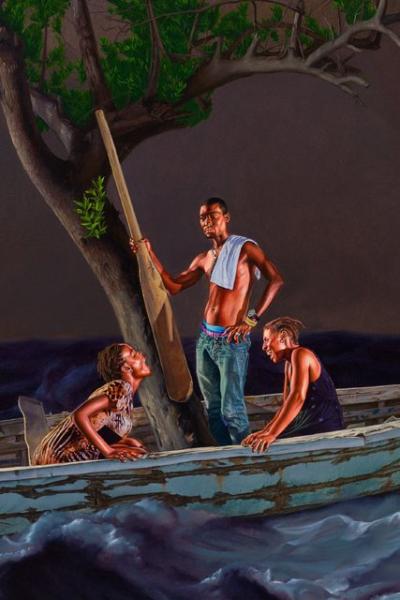
For Refugee Week, Megan Barford looks at the skilled engraver - and refugee - behind one of the Museum's beautiful 16th-century sea atlases

I’m writing today about a sea atlas, published in London in 1588. With its colours and sea monsters and leather binding, it is many of the things that one would expect from a 16th-century volume of charts. My focus is one of the engravers who worked on this atlas, a highly skilled artisan, Jodocus Hondius, who arrived in England from Ghent in 1583-84 as a refugee.
16th-century Europe was wracked by religious conflict which led to the displacement of a huge number of people. In this case, Hondius, a Flemish Protestant, left Ghent when the Southern Netherlands were taken back under the control of Catholic Spain. As with anyone forced from their homes, those who left took with them the variety of experiences and expertise which might be amassed during the course of a human life.
In England Hondius settled in Southwark. Already an engraver of some renown, he cut type and worked on maps and portraits, establishing a working relationship with major map publisher Edward Wright. When it was decided in the 1580s to produce an English edition of one of the most important Dutch sea atlases of the age, Lucas Jansz Waghenaer’s Spieghel der Zeevaerdt (in its English edition, The Mariners’ Mirrour) Hondius was given some of the work engraving the plates.
The process of printing from engraved copper was the main way in which maps were produced in this period, and the production of engraved plates was a highly skilled activity. Using a burin (a sharp pointed instrument with a wooden handle), the artist would engrave lines into a copper plate, with a manual control, from years of practice, that allowed for consistency of depth and thickness of lines, the smoothness of curves, and the regularity of all the waves which were put into the sea. It was skills such as these which Hondius brought with him to England, and with which he engraved not only several of the plates in the sea atlas, like that pictured here, but also the plates for what are recognised as the earliest English globes, two of which are now at the Middle Temple library.
Each year Royal Museums Greenwich mark Refugee Week, and one of its purposes is to acknowledge and celebrate the skills and expertise of people who, over the centuries, have arrived in the British Isles as refugees. Looking at an object in the National Maritime Museum made by someone who arrived in England as a refugee adds yet another example of how much this country has been enriched by those who have come here under such circumstances. It also plays a part in acknowledging the broader identities of people who have been forced to leave their homes. Because one of the things this atlas shows, sea monsters and all, is that Hondius was, and was allowed to be, an engraver - before and after he was a refugee.

